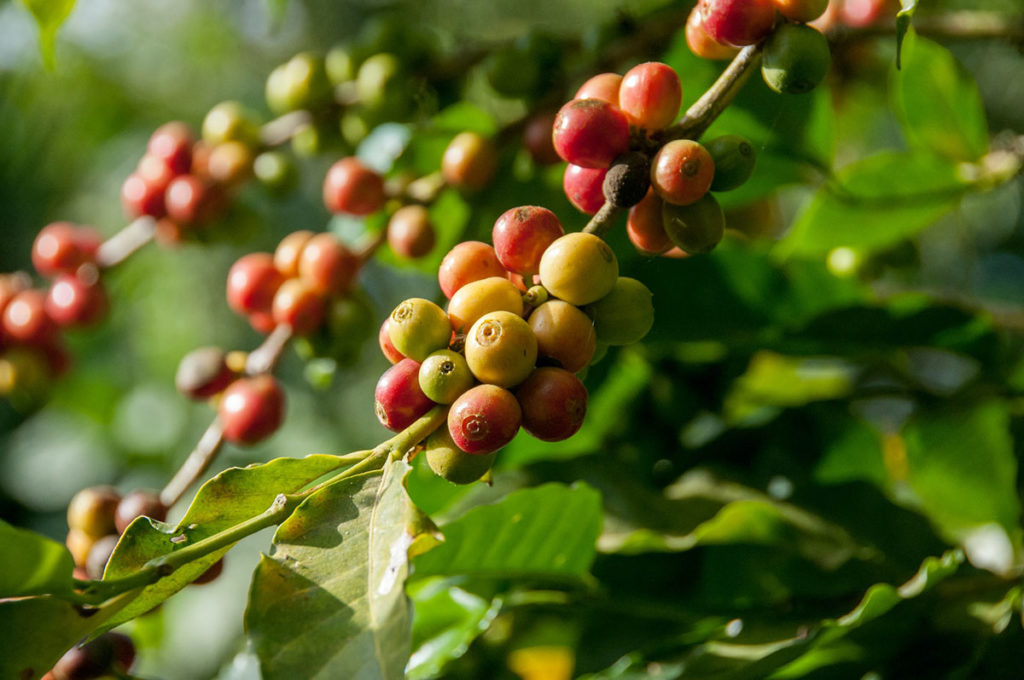If you look around a coffee shop, or walk down the coffee aisle at the store, you’ll likely see the word “Arabica” used. Though you might assume this refers to where the coffee comes from, it actually refers to the type of coffee beans used to make it. Coffea, also known as the coffee plant, isn’t one species of plant but a genus that contains over 120 species of plants.
However, just two of these species account over 90% of coffee production: Arabica and Robusta.
Despite the prevalence of Robusta, you’ll find that Arabica gets almost all of the attention from roasters, baristas and coffee enthusiasts. Why? Let’s take a look.
Arabica Coffee
 Despite the name, Arabica plants originate from the African country of Ethiopia. As the popularity of coffee began to spread, explorers and travelers quickly started growing the plant across the world. This led to the development of different varieties or cultivars of Arabica such as Typica and Bourbon. Within these cultivars are additional subspecies such as Hawaii’s Kona coffee.
Despite the name, Arabica plants originate from the African country of Ethiopia. As the popularity of coffee began to spread, explorers and travelers quickly started growing the plant across the world. This led to the development of different varieties or cultivars of Arabica such as Typica and Bourbon. Within these cultivars are additional subspecies such as Hawaii’s Kona coffee.
Taken together, Arabica coffee makes up roughly 60% of coffee production across the world. Though tastes can vary between different cultivars, subspecies and countries of origin, Arabica coffee is generally known for its sweet, smooth flavor with notes of chocolate, sugar and even fruit. While the phrase “100% Arabica” doesn’t guarantee the quality of a particular coffee, you’ll find that the world’s best coffees come from the Arabica plant.
So, why does Robusta still make up such a large portion of the market?
Robusta Coffee
Coffea Canephora, better known as coffea Robusta, didn’t enter the market until over two centuries after Arabica coffee started spreading across the world. Like Arabica, it originates from Africa. Despite this shared lineage, however, Robusta beans produce a very different flavor.
In terms of taste, Robusta coffee’s most distinct characteristic is its bitterness. This likely stems from its incredibly high caffeine content. Robusta beans contain nearly twice as much caffeine as Arabica beans. Not only does this give Robusta coffee an extra kick, but it makes Robusta crops naturally resistant to pests. This characteristic, along with the superior resilience to cold and humidity, results in higher yields compared to coffea Arabica.
All in all, coffea Robusta is much easier (and cheaper) to grow, and its increased caffeine content is welcomed by those who drink coffee solely for an energy boost. Ultimately, these traits make it popular for instant coffee and bargain brands, though it’s also utilized for Italian espresso. In addition to having a high caffeine content, Robusta produces a thick crema when brewed with an espresso machine.
Nevertheless, if you’re buying specialty coffee from a local café, it’s almost certainly made with Arabica beans. They simply produce a better tasting cup of coffee. If you’d like a delicious cup of coffee that’s made the right way, stop by our Minneapolis coffee shop. All our coffee is properly sourced from ethical roasters who are dedicated to creating a sustainable coffee economy. We’re happy to tell you where your coffee comes from and who helped contribute to its quality.

